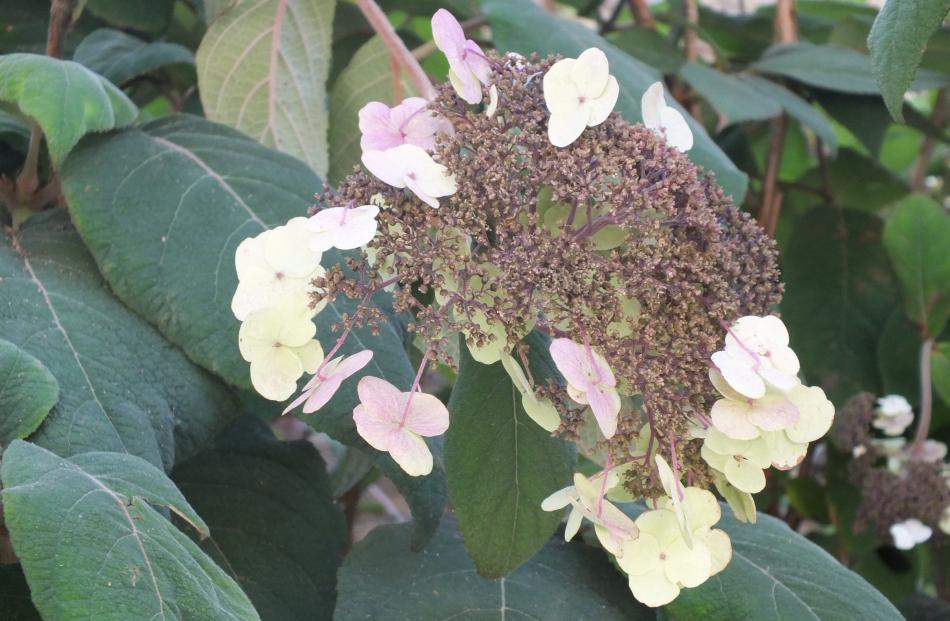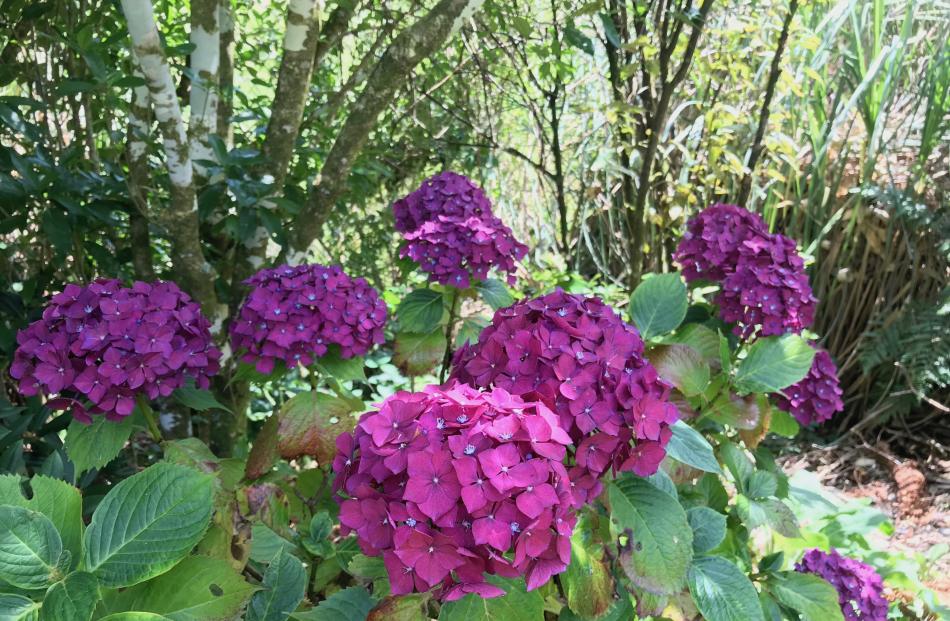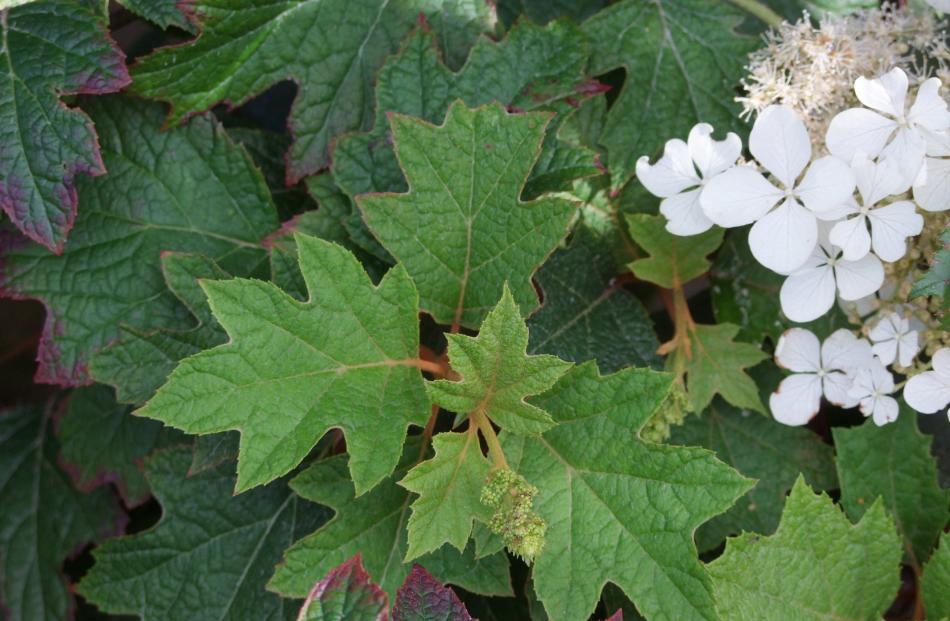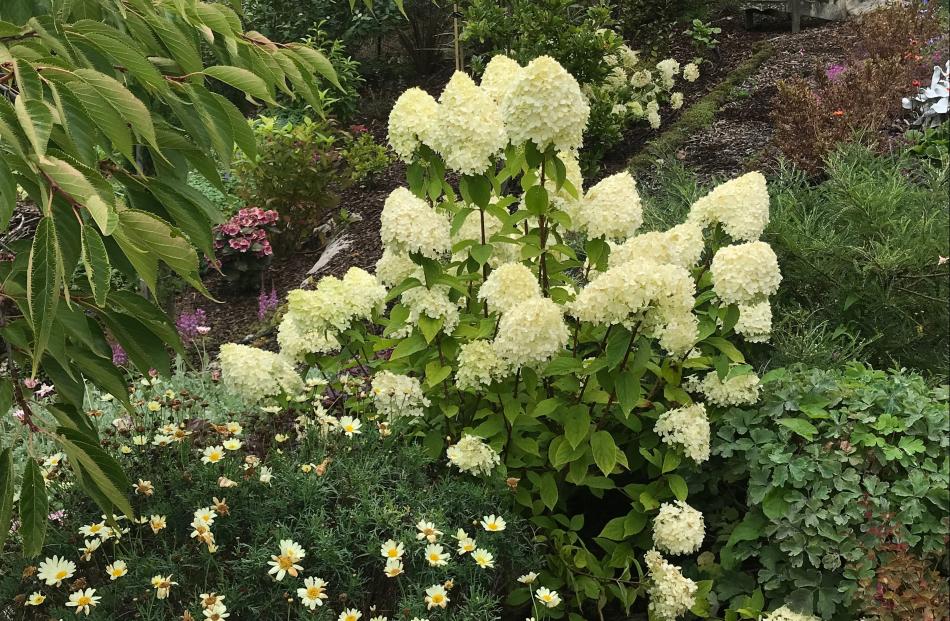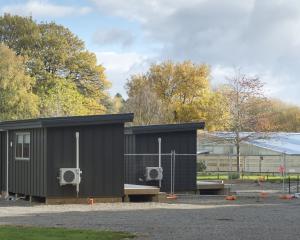Gillian Vine finds hydrangeas are making a comeback.
Flower fashions are fascinating. Sometimes they follow a popular decorating trend, at other times florists are responding to customer demand for particular colours, while how some fashions arise is a mystery.
Back in vogue are chrysanthemums, carnations and hydrangeas, which means more in garden centres and online nurseries, and plenty of named varieties.
There are some 70 species of hydrangea, native to Asia and the Americas. About half of them are grown in New Zealand and of those, Hydrangea macrophylla is the most common, mainly because of the numerous cultivars offered.
Hydrangeas do not have big petals but colourful bracts that surround tiny flowers. These grow in dozens on a single stem, giving panicle (conical) and corymb (ball and flat-headed) displays. Lacecaps have a mixture of large bracts and small florets.
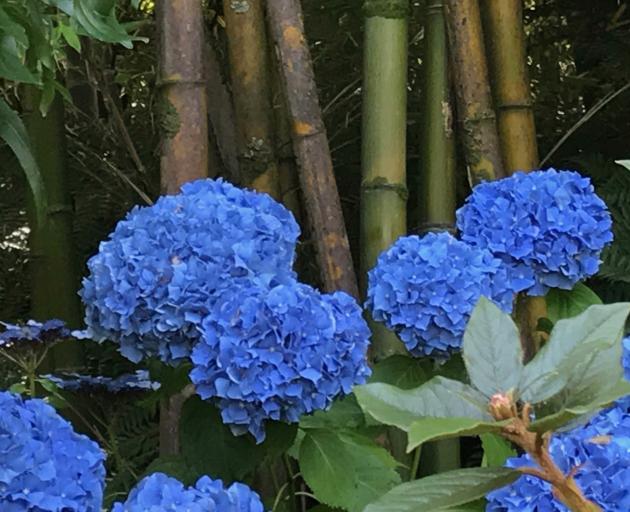
A related plant, Japanese climbing hydrangea vine (Schizophragma hydrangoides) has scented white, lacecap flowers.
Quite rare in cultivation is the Taiwanese evergreen lacecap, H. angustipetala "Gold Dust". The little florets are yellow, the bracts creamy, so the overall effect is golden.
More usually, hydrangea colours are white, pink, blue and mauve or purple. Whites, such as the popular variety H. paniculata "Limelight", may turn pink as the bracts age, while H. aborescens "Annabelle" goes green as heads mature. In both cases, this is a seasonal effect, not a permanent colour change, and these types are not fussy about soil, so can be grown alongside either pink or blue varieties.
Blues and pinks are mainly derived from H. macrophylla, which is very sensitive to soil acidity, blues need acid soil and pinks alkaline conditions.
To maintain blue tones, water with aluminium sulphate solution several times a year, or try spreading coffee grounds under the shrub to make the soil more acid. Some gardeners recommend pine needles or lawn clippings to push up the acidity of the ground. Whatever you choose, keep the mulch clear of the trunk.
Pinks, including the lovely bicoloured "Sabrina", need alkaline (lime-rich) soils.
Having read lots of articles on how to turn blue hydrangeas pink, I set out to try it by liming heavily but only managed muddy mauve blooms. Obviously, it’s better to buy the preferred hue at the start but check how hardy the variety is — H. macrophylla is wonderfully tough but Vietnamese H. indochinensis is quite delicate and not really suitable for southern gardens.

When cutting flower heads for displays or drying, take the stem off just above a double bud, as these grow to produce next season’s flowers.
Hydrangeas are easily grown from pieces, either soft-wood — try striking bits from a bunch of florists’ flowers — or take cuttings of harder stems now. Choose 30cm stems that have not flowered, cut off the lower leaves and put in a pot of gritty mix. Leave them in a cool place and keep moist but not too wet and roots should form in about six weeks.
Easy-to-grow shrubs that suit a semi-shaded area, it’s a pleasure to see these flamboyant beauties back in fashion.

